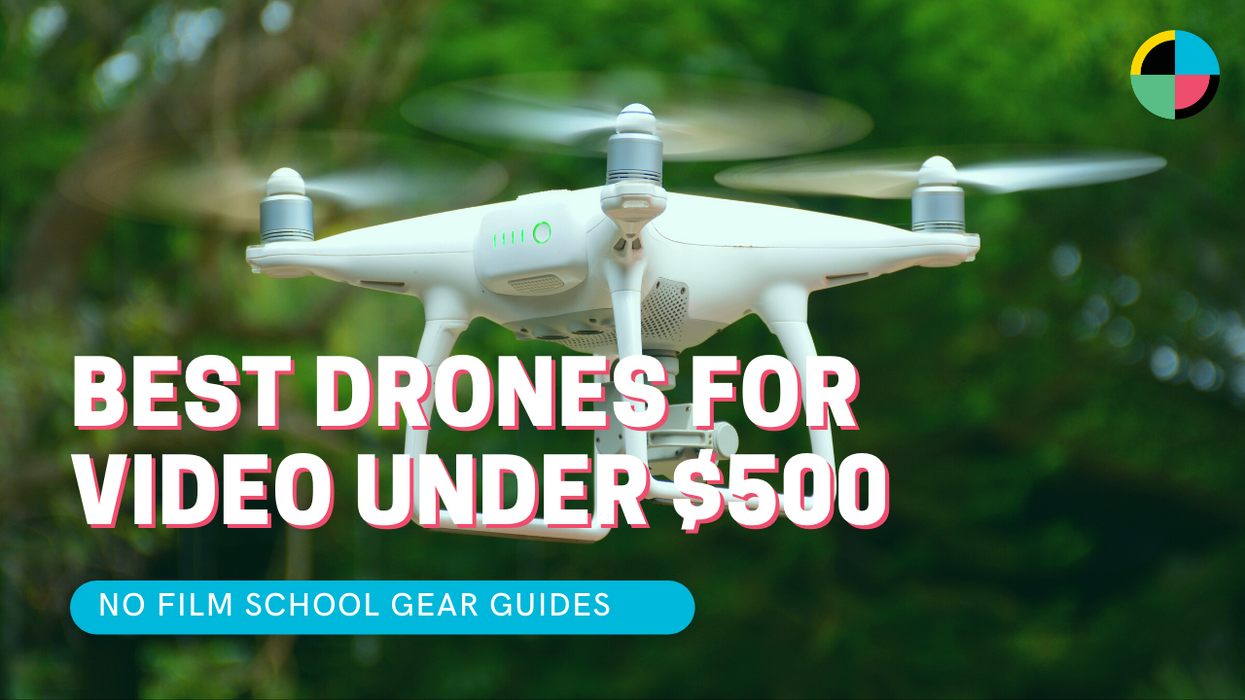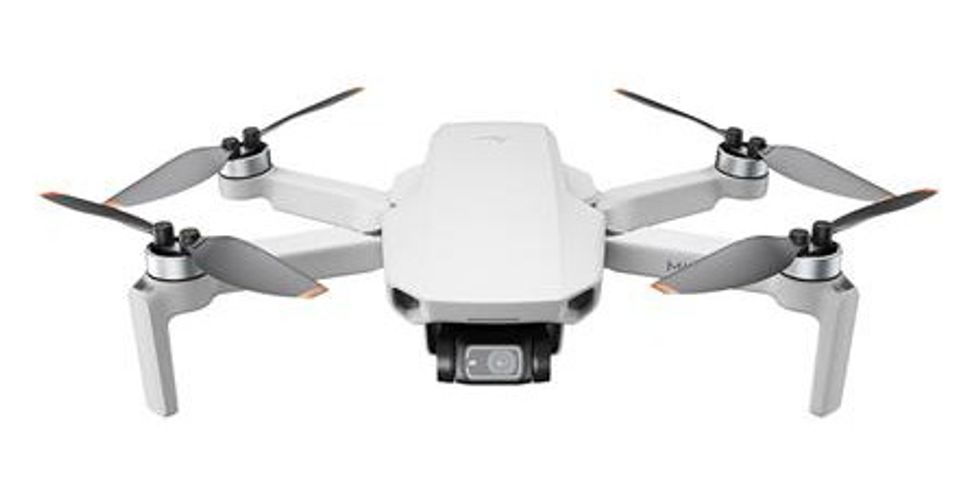Best Drones for Video Under $500
Need a drone that won't break the bank? We have an answer for you.

A good drone is rapidly becoming part of the default toolkit of many filmmakers. With their ability to capture eye-catching establishing shots, or create dynamic moving shots of a scene, drones have become useful tools for storytellers.
However, if you aren't heading toward becoming a full-time operator and only need one for occasional shots, it may not make sense to spend too much money on some of the best drones available.
Whatever you are looking for, be sure to head over to our gear guide hub page for more gear of all variety.
Luckily, there are a few options that provide dynamic image quality for under $500. Let's take off.
Best Overall: DJI Mini 2
Mavic Mini 2

The DJI Mini 2 is beginner-friendly, powerful, and well, mini. Impressive performance, stunning image quality, and creative videos are just a few taps away.
- 4K Video
- 249 grams
- OcuSync 2.0
- Multiple Shooting Modes
- Easily Moved by Wind
- Battery Life
While DJI has slowed the refresh cycle on their higher-end drones, they have kept up a rapid pace of improvement with their smaller units, leading to the amazing set of features packed into the Mini 2, released only a year after the original Mavic Mini.
Before we get to the other key features, we have to talk about its weight. It sneaks in at 249 grams, which is under the 250-gram floor that's the threshold to register yourself as a drone user in different markets. While you should absolutely investigate your local laws and guidelines for drone work, the 250-gram weight floor is a common one.
The small size is beneficial not just for compliance but portability. The drone comes with a strap to wrap around the unit to keep the propeller blades secure, and all wrapped up, you can just leave it in your set bag pretty much 24/7. That means it's always there when you need it for a scout or want to get an overhead shot of the location or explore various camera angles and movements.
The Mini 2 is full of performance too. It offers 4K video up to 30fps. It has a three-axis stabilized head for smooth shots and for more flexible operating. It manages approximately a 30-minute flight time and comes with Ocusync 2.0, a more reliable system when it comes to range.
As for the controller, DJI has moved the smartphone mount to the top of the remote instead of the bottom, which is a major and appreciated improvement. DJI had a brief period where it was obsessed with folding everything, both the drone and the remote controller. They have now gone back to letting the remote just be a remote, with the phone mounted on top, and it's nice. It's not physically too large, making it easy to keep stashed in your kit. Plus, with the smartphone mounted on top, it's easier to see what you are shooting and to control the drone smoothly.
That controller also uses DJI’s Occusync 2.0 technology to control the drone, which extends the range from 2.4 miles to a whopping 6 miles.
It's always vital to keep a line of sight view on your drone for safety, so it's rare you'll need to go beyond 2.4 miles, but there are times up in the mountains over a valley where you can keep eyes on a drone beyond that limit, and it's nice to have more range. It's also helpful since in busy RF areas the ranges are often lower. We've flown drones with 2.4-mile ranges that left range well, well before that, and having a stated range of 6 miles is going to open up a host of more shot options.
Another nice touch is that both the main drone and the remote are chargeable via USB-C. As we move more and more into a USB-C universe, filmmakers tend to have USB-C batteries and chargers on them at all times for other products, and it's nice that we're getting close to a world where a large amount of interchangeability exists. If you forgot your drone charger, your laptop charger or backup battery should be able to do the job.
You can read our hands-on review of the DJI Mini 2 here.
Table of Contents
How We Picked
We've been flying drones since the DJI Phantom and keep a close watch on the drone market, reviewing, testing, and working with them on productions. We evaluated the performance available for the price, and looked for real-person reviews to ensure that buyers are as happy with actual performance as the specs might indicate.
 Holy Stone HS700D FPV
Holy Stone HS700D FPVCompetition
Drones are one of the few areas where one company is just so dominant, and the pace of advancement is so fast, that there is really nothing else we can recommend at this price point. Buying a model from a few years ago at a discounted price doesn't make much sense, since they improve so much year on year that a drone even two or three years old will feel frustrating in its flight modes and image quality.
Staying under $500, there aren't real competitors from the other major players. In fact, there aren't other major players.
DJI is so dominant that its competitors like Parrot, Autel, Yuneec, and Skydio are all minor or have gotten out of the space. Things can change anytime and we expect more competition in this space, especially from Sony. If you are looking for something non-DJI, check out the options below.
- Potensic T35 - $239
- Holy Stone HS700D - $229
- Holy Stone HS720 - $249
If you want to upgrade, or are looking for something more robust, check out some of theBest Drones for Video Recording that cost a little more.
Final Thoughts
DJI really corners the market when it comes to reliable drones under $500. If you are looking for a drone to use on location scouts, to get the occasional establishing shot with, and even to consider for more elaborate shots, the Mini 2 will treat you well, and not require FAA certification while you do it.











